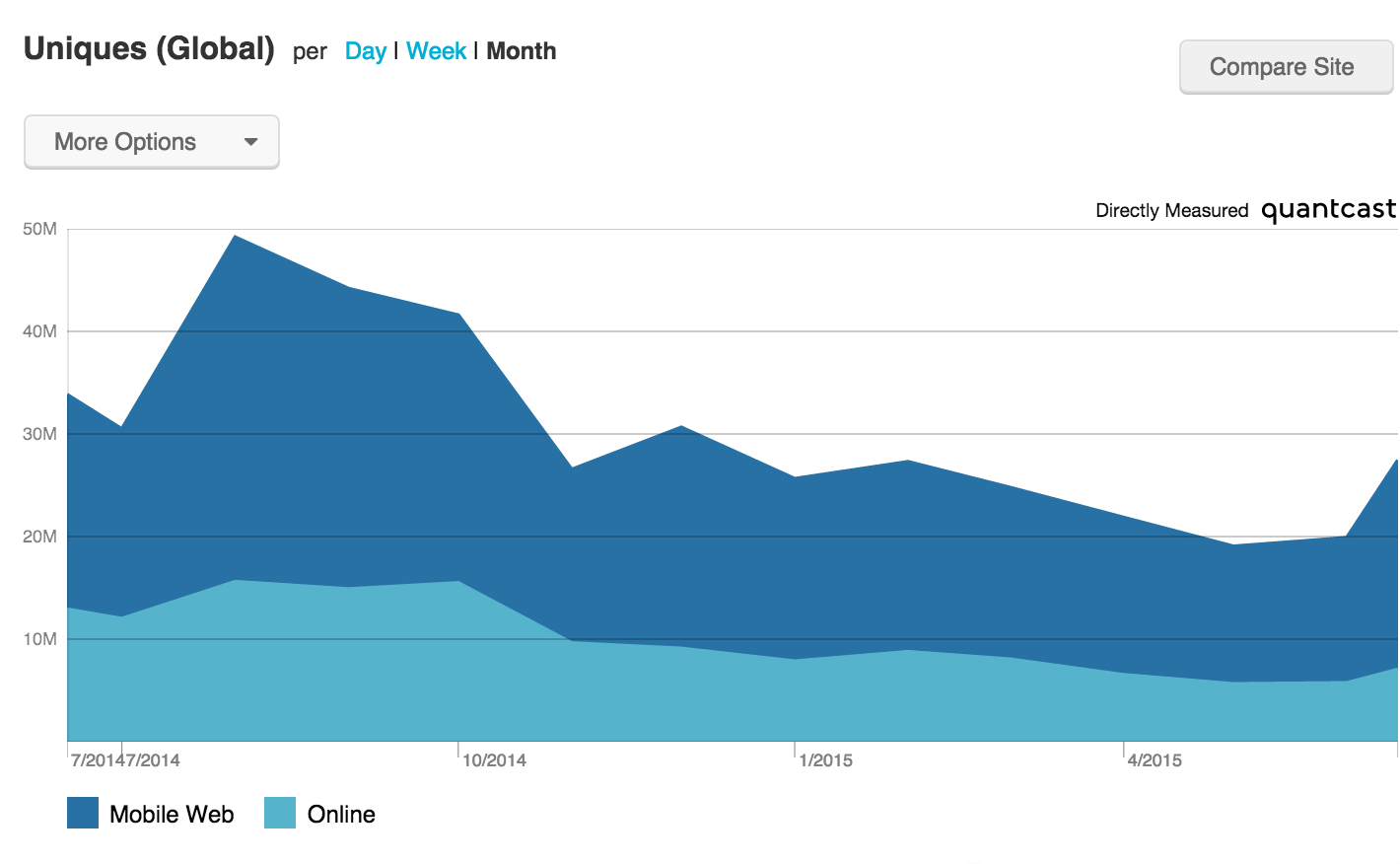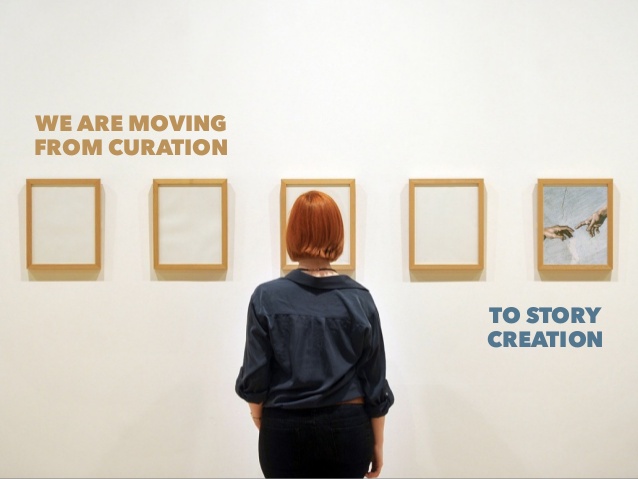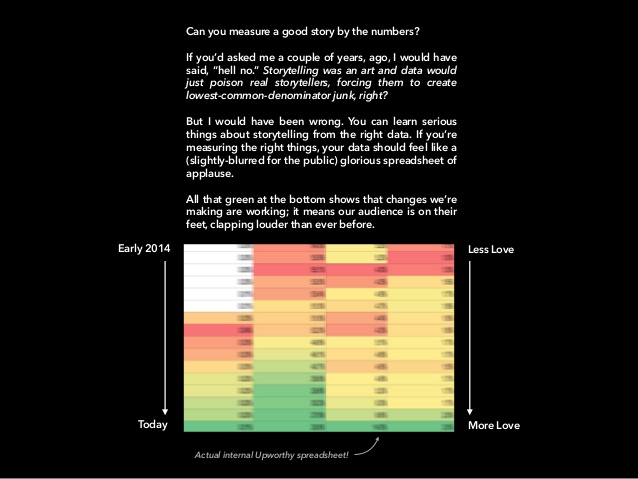Brands
Why Upworthy Is Ditching Aggregation for Original Content—and Why Brands Should Too
“We are in a street fight for human attention.”
So says Amy O’Leary, editorial director at Upworthy, in a new SlideShare explaining the notorious—and oft-lampooned—media company’s revamped editorial strategy.
She’s not exaggerating. Attention is hard to come by these days, and for most in the media industry, trying to attract and retain readers besieged by digital content at every turn is about as rough-and-tumble as it gets.
For a long time, Upworthy was the guy with the trident in this metaphorical street fight—the site attracted 90 million unique readers in November 2013 by aggregating uplifting videos and updating them with click-worthy, shareable headlines that spread like wildfire on sites like Facebook (mostly Facebook).
Upworthy saw itself as playing a valuable role in surfacing important content and helping it go viral. In an email exchange with our editor-in-chief, Joe Lazauskas, last July, Upworthy’s head of data and analytics, Daniel Mintz, wrote, “We’re wary of original content, mostly because we think there’s so much great stuff out there already that nobody sees and we don’t want to add the glut.”
However, some unexpected changes to Facebook’s algorithm sent “the fastest growing media site of all time” for a loop.
Here’s what happened.
Facebook started to crack down on clickbait headlines, likely punishing Upworthy in the process. At the same time, Facebook introduced auto-play videos, which really started to take off with the Ice Bucket Challenge last summer. This viral attention around the new feature proved how important Facebook video could be, and prompted every major content creator to start posting awesome videos on the platform.
This was bad news for Upworthy. Why? Because as viewers became accustomed to watching videos directly on Facebook, they weren’t clicking on Upworthy’s links as much. Auto-play videos simply presented a quicker and easier way to get your dose of inspiring viral videos.
By late August, Facebook auto-play videos started usurping the top spots in News Feeds that had once been Upworthy’s domain. As Facebook’s video dominance continued to grow, Upworthy’s traffic continued to plummet, hitting a low of 19 million readers in May, according to Quantcast.

This year, Upworthy has been fighting to reverse that decline by revamping its editorial structure—including changing job titles from “curator” to “writer” and hiring and firing accordingly—and bringing in O’Leary from The New York Times to oversee the operation. She helped the team realize the dangers of clickbait, and how gaming algorithms for virality is “a short-term play, at best,” according to the SlideShare.
Instead, she’s set Upworthy’s sights on original, data-driven storytelling.

Upworthy already has the tools to recoup that lost attention. By curating the Internet’s hottest videos, the company’s editors have gained an understanding of how to build a story that readers empathize with and can’t help but share. And they’ve also learned about the data behind the stories, including where they’re viewed and how they’re shared.
It’s just that now, instead of using those tools to aggregate other people’s stories, they’re going to create their own. According to Upworthy, it’s already working.
The report features this nice (albeit vague) chart as evidence.

More convincing, however, is the individual successes of Upworthy’s new original stories. For example, Upworthy recently launched an original video series, titled “Humanity FTW,” that profiles the amazing ways people are giving back to their communities. One story, about Mason Wartman, a man who left a life on Wall Street to open up a pizza shop in Philadelphia, has accrued over 29 million pageviews since it was published in March.
“While Mason’s story had been told several places,” O’Leary writes in the SlideShare, “Upworthy’s expertise in framing the story for maximum social distribution … led to massive views, and a real-world impact for the people Mason serves every day.”
Upworthy also wanted to tell the story of how fast-food restaurants are exploiting their employees with unfair wages. Instead of publishing a dry essay about the topic, Upworthy unleashed a 5,000-word original story in a list-based article called “5 incredibly delicious chain restaurants you should never, ever eat at and 1 you should but can’t.” It was posted at the end of June and already has over 2 million views. These pieces coincided with an uptick in traffic in June, indicating that the reinvented publisher may just be figuring things out.
Upworthy has long been used as an argument for the power of curating and syndicating content, but their journey back towards original content provides a big lesson for everyone creating content today—particularly brands. Any company that produces content will have to slug it out in the street fight for attention, and—as Upworthy learned the hard way—you can’t just aggregate videos and infographics from others and expect to win in the long term.
“Future-of-news types and digital media thinkers will probably shrug,” O’Leary writes. “But we believe that, in the end, quality empathetic storytelling supported by a sophisticated data infrastructure merged with a mission to make the world a better place is a winning formula for the kind of stories people love.”
And, of course, for winning that street fight.
Image by Bard SandemoseGet better at your job right now.
Read our monthly newsletter to master content marketing. It’s made for marketers, creators, and everyone in between.




